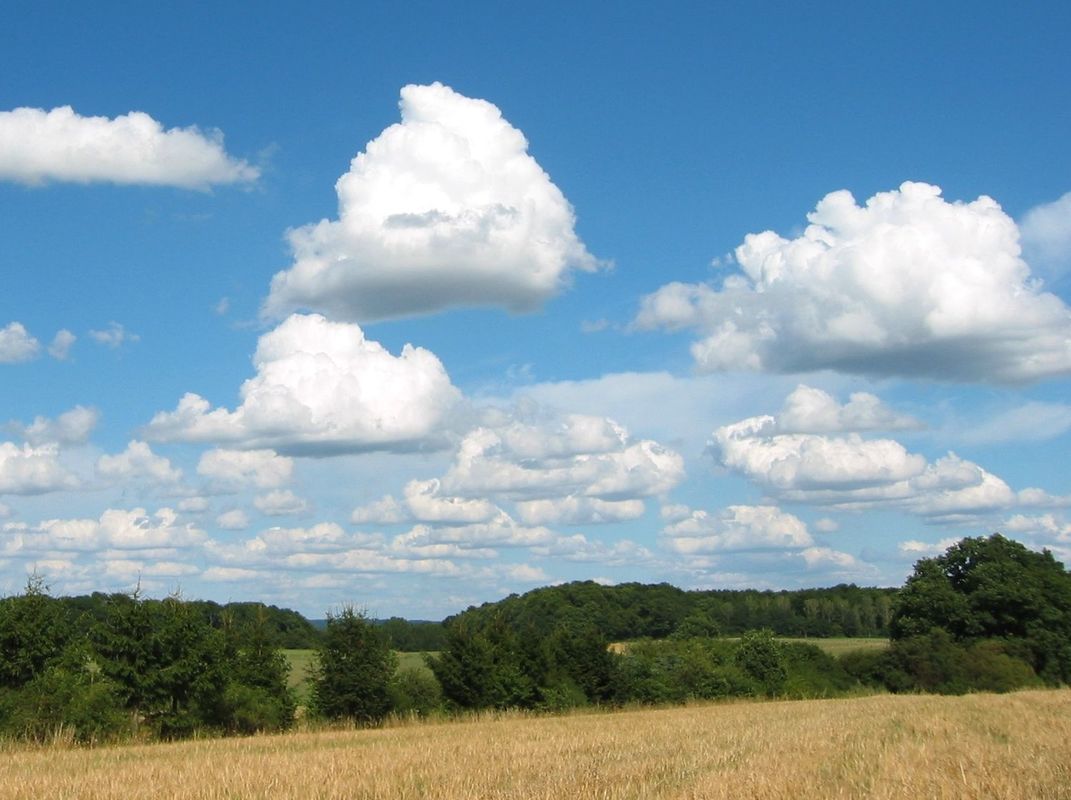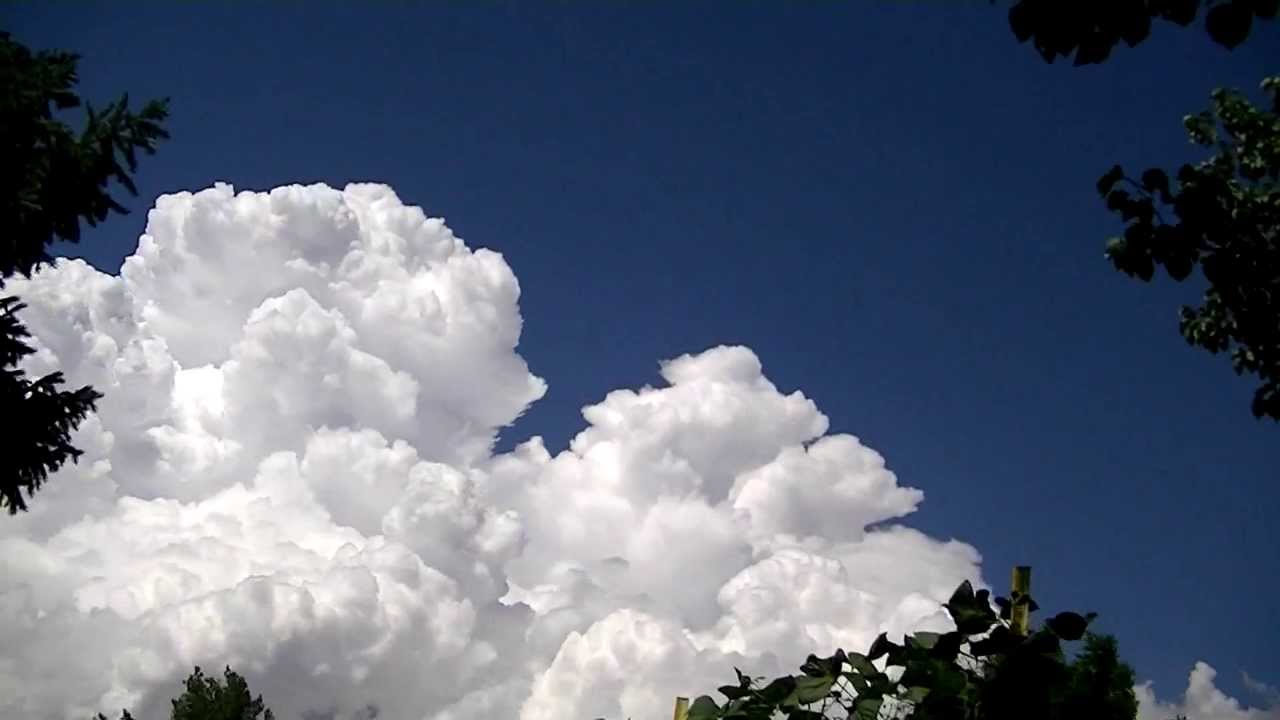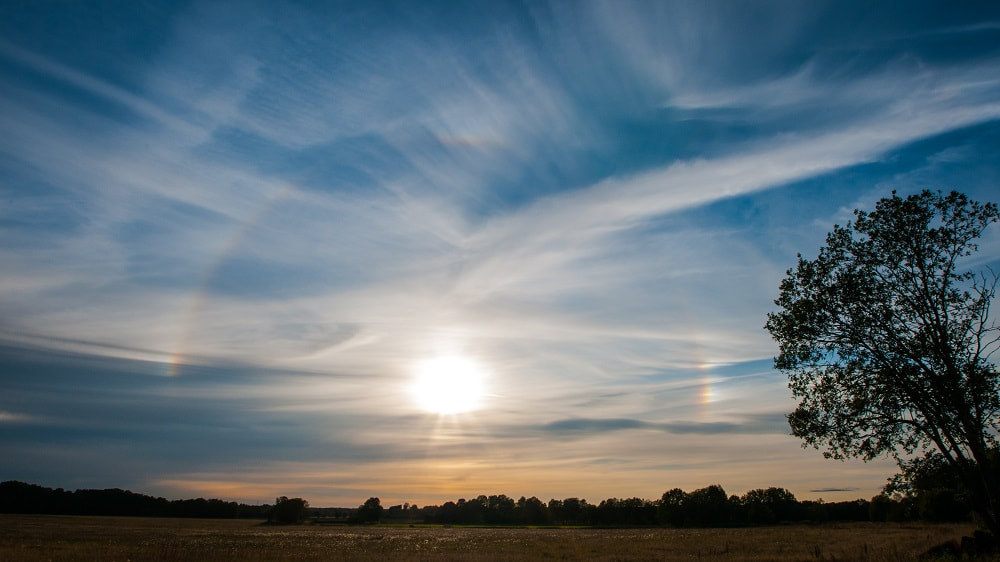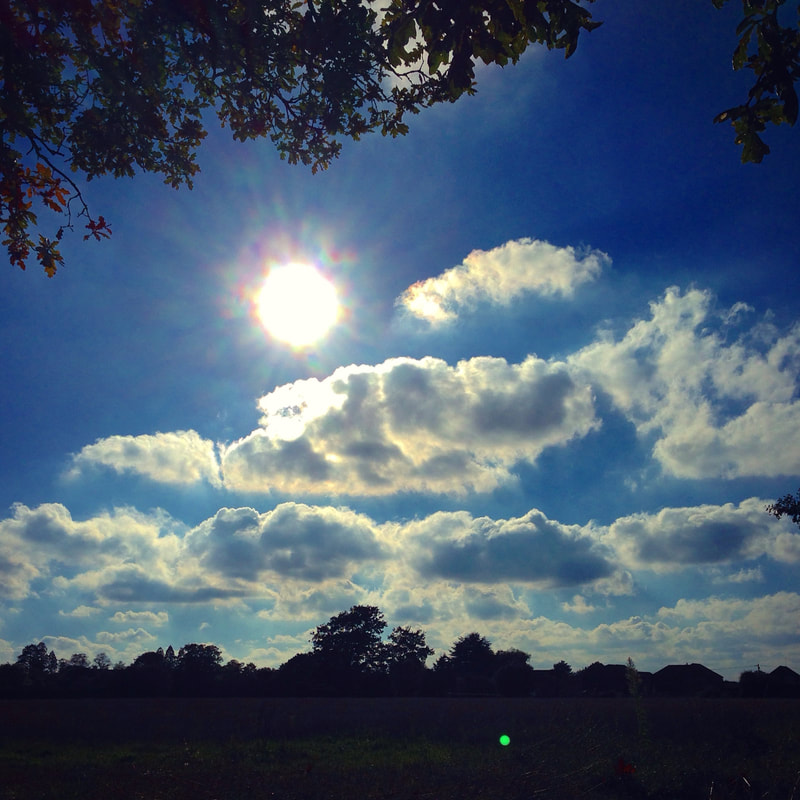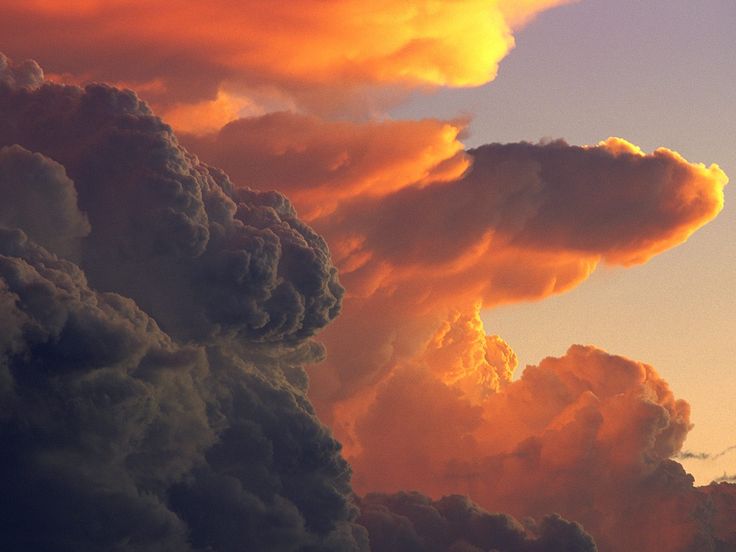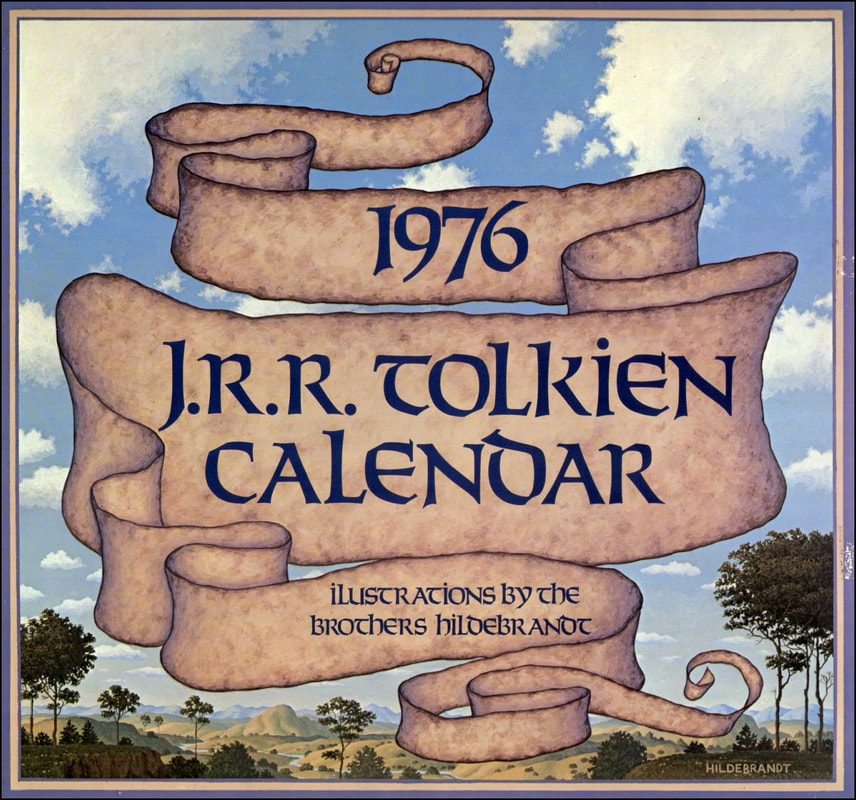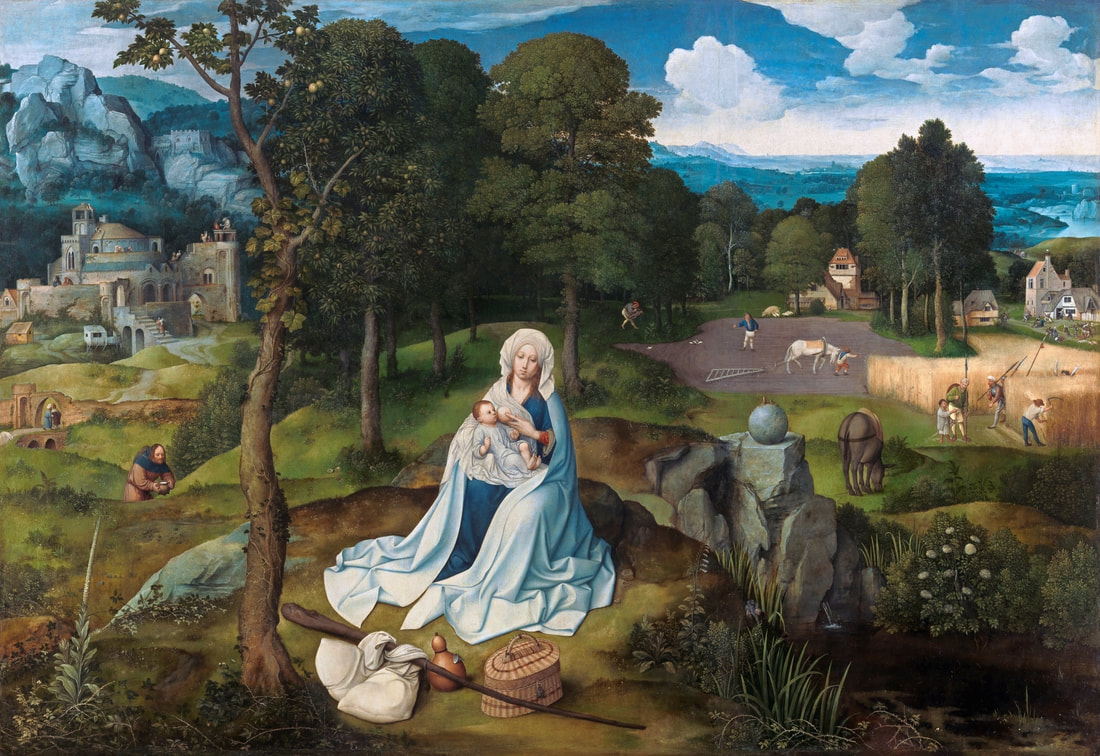They are the clouds that lend themselves to shape hunting: they are the skyward galleons, the thundering elephants, the sailing castles. They are the mountains in the sky, time lapsed and tumbling and they move across the horizon.
|
Where I was raised, in the San Francisco Bay Area, cumulus clouds were rare voyagers from afar, proceeding in their stately manner a few days each Spring. Perhaps their scarcity when I was growing up explains their fascination for me. My native skies were painted by cirrus, stratocirrus and altostratus.
|
My native skies: beautiful and flat and disseminate
|
When I first spent a summer in the UK I was bowled over by the fleets of them, proud cumuli preparing summer storms and dramatic sunsets.
|
Which is not to say they were unknown to me. For there they were, in the illustrations of books I loved. John R. Neill piled them up on the horizons of Oz.
|
|
Perhaps it was their allure, piling and billowing in backgrounds, that first drew my gaze to the distant landscapes there, just over the shoulder of the painting’s subject.
For some, those vast cumulus clouds are the subject. They are the kings of the North Sea skies, rolling against the horizons of English and Dutch painters. Maritime air and flat horizons are their native fields.
They are the most familiar manifestations of the Sublime; their vastness extends to the furthest reaches of comprehension: infinity, drifting hugely, right up there over our heads.

They are like something out of Milton: their enormity makes the sky vaster, more infinite.
